Suspended between clouds and sheer cliffs in the rocky highlands lies The Death Rock of Ha Giang, a destination that makes travelers shiver at just the mention of its name. It’s merely a stone ledge jutting out from a mountainside, with a bottomless abyss below, rugged access paths, and absolutely no safety barriers. Yet this very element of danger has placed it firmly on the bucket list of adventure enthusiasts.
In this article, Phieu Travel will provide you with comprehensive information about Ha Giang’s Death Rock, how to reach it, unforgettable experiences you shouldn’t miss, and essential tips to make your journey complete. Read on to discover more!

1. The Death Rock of Ha Giang
Located in Xeo Sa Lung village, Pai Lung commune, Meo Vac district, known locally as the Ha Giang Death Rock, this cliff is a popular destination for thrill-seekers conquering the Ma Pi Leng Pass. This natural rock formation sits at an elevation of over 1,700 meters above sea level, projecting from the mountainside with a flat surface that slightly tilts outward and has no guardrails, causing even the bravest visitors to feel their hearts skip a beat.
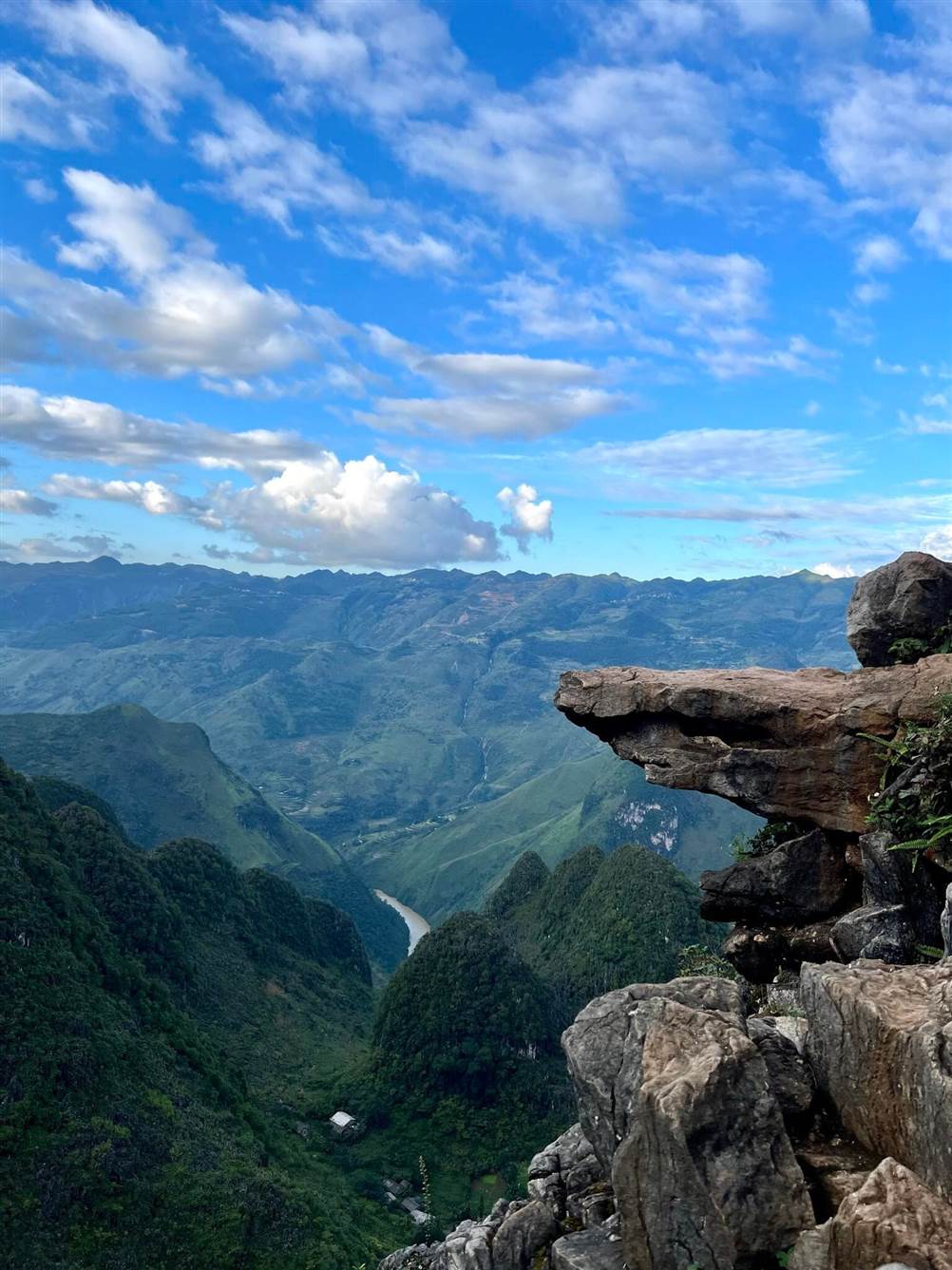
From this vantage point, you can capture the entire majestic landscape of Ha Giang within your field of vision. Below lies the emerald-green Nho Que River, while across stands the famous winding mountain pass. Sitting here feels like floating among the clouds, immersed in the serene yet overwhelming beauty of the border mountains.
The rock isn’t just a unique photo spot; it’s intertwined with an ancient H’mong legend. The story tells of a kind-hearted fairy who once sat on the cliff edge watching over the Nho Que River. Under her protection, local villagers enjoyed bountiful harvests and peaceful lives for generations. In gratitude, locals named this mountain peak “Chua Lanh Gau,” meaning Fairy Mountain.
On the highest cliff of this peak grew a precious medicinal plant that could cure all illnesses, but no one dared climb up to collect it due to the treacherous terrain. One day, a woman in the village fell gravely ill. Her husband, out of love, drove wooden stakes into the mountain face to climb up and gather the medicine. Despite facing great danger, he succeeded and saved his wife. Strangely, the wooden stakes he left behind mysteriously disappeared, making the spot inaccessible again.
Later, two white rock faces appeared on the mountain peak a larger one called the Husband’s Cliff and a smaller one known as the Wife’s Cliff. To this day, local villagers still make offerings here, preserving the ancient legend and sacred beliefs passed down through generations.
Many young travelers seek to conquer the Death Rock despite its dangerous terrain. Numerous visitors describe the feeling of reaching the Death Rock as “heart-pounding, legs trembling,” but once successful, the reward is absolutely worth it.
From the rock ledge, Ha Giang’s majestic yet peaceful landscape unfolds before you, leaving travelers in silent contemplation.
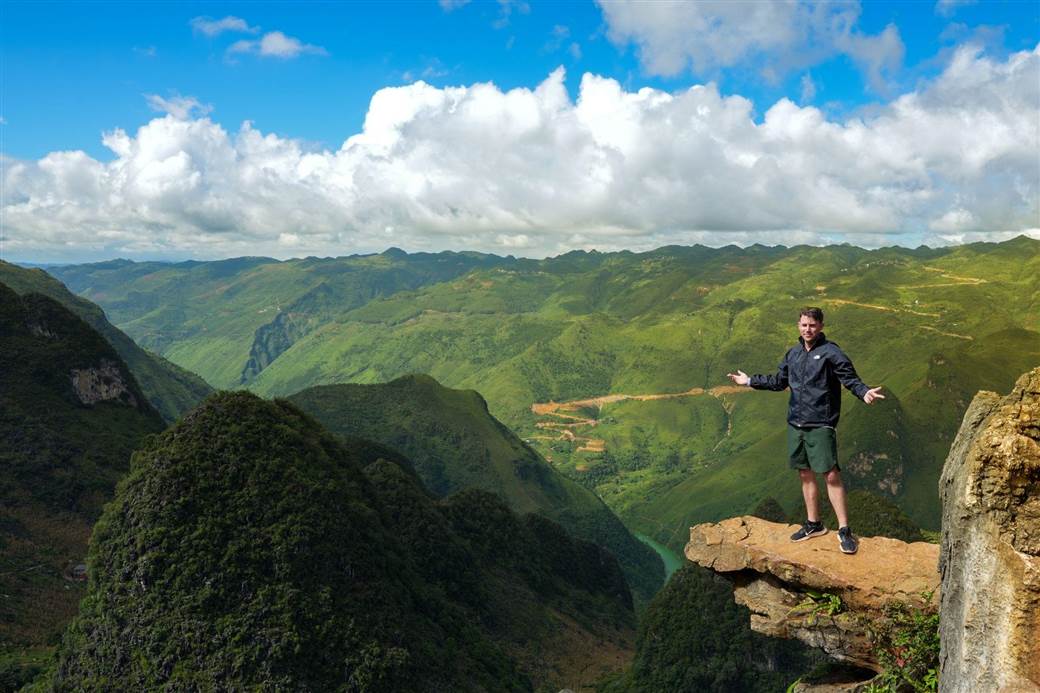
2. Detailed Access Instructions
The Death Rock is situated on a small branch road of Ma Pi Leng Pass, sometimes called Ma Pi Leng B. This narrow section features sharp turns and potholes, accessible only by motorbike. If you’re traveling by car, you should park near the monument or the Happiness Road Museum and continue by motorbike or on foot.
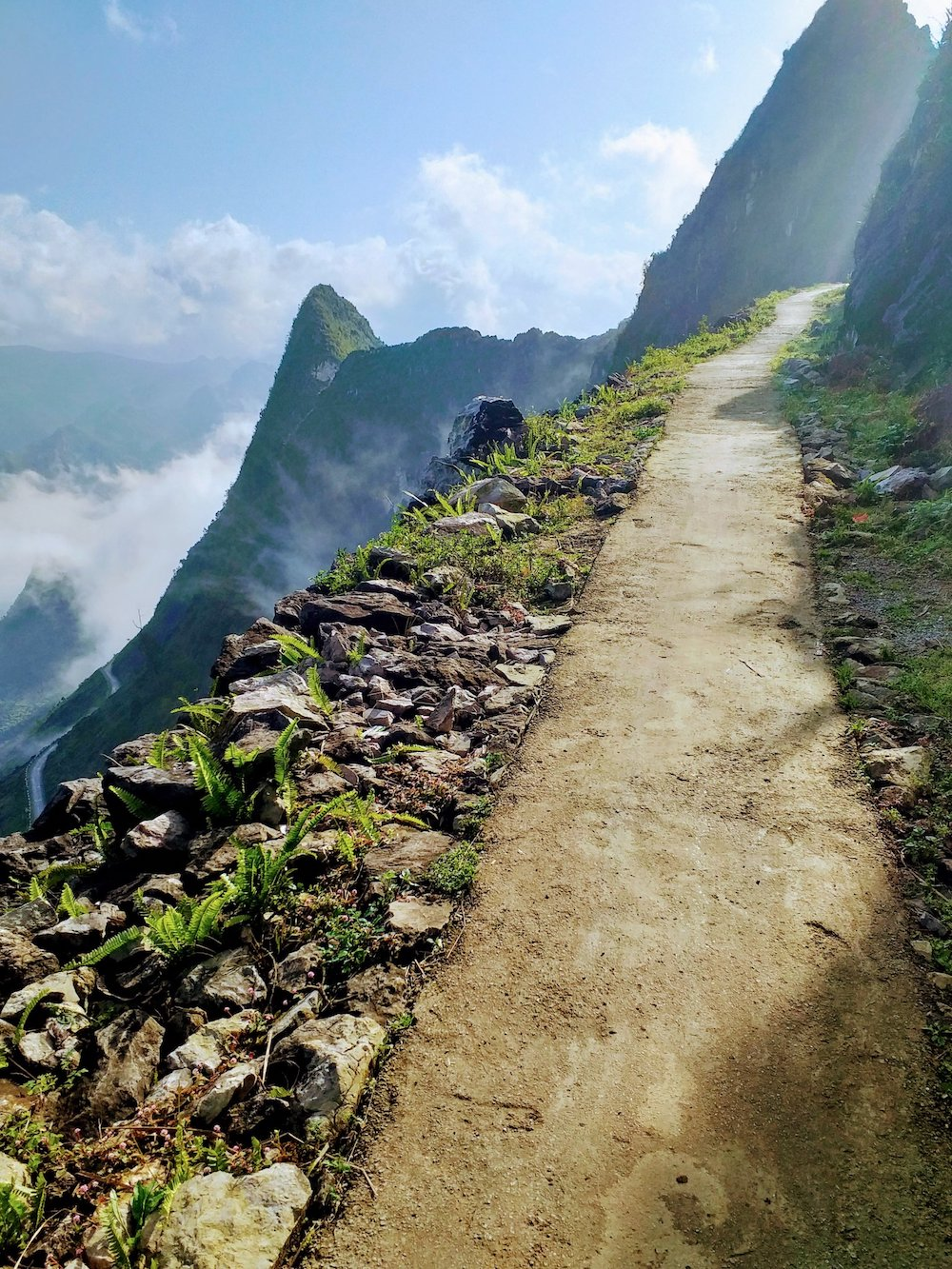
From the museum, you can ride an additional 3 km along the small mountain road. However, if you’re not confident in your riding skills, it’s advisable to park outside and trek the 5 km route. This path winds around the mountainside with sheer cliffs on one side and a deep abyss on the other, requiring extreme caution.
As you approach the valley area, you’ll notice a small turn leading to a viewing platform. This is an ideal rest stop to admire the panoramic view of Ma Pi Leng Pass and the Nho Que River from above. You can take a break, have a light snack, take photos, and then continue your trek toward the rock ledge.
The final stage is a hiking trail through nature. Along the way, you’ll be accompanied by birdsong, cool breezes, and endless mountain vistas. Though somewhat strenuous, once you reach the rock, you’ll feel it was worth the effort. All fatigue will dissolve before the magnificent beauty of Ha Giang. This journey itself has become one of the most talked-about Ha Giang Loop attractions, especially for travelers seeking adventure.
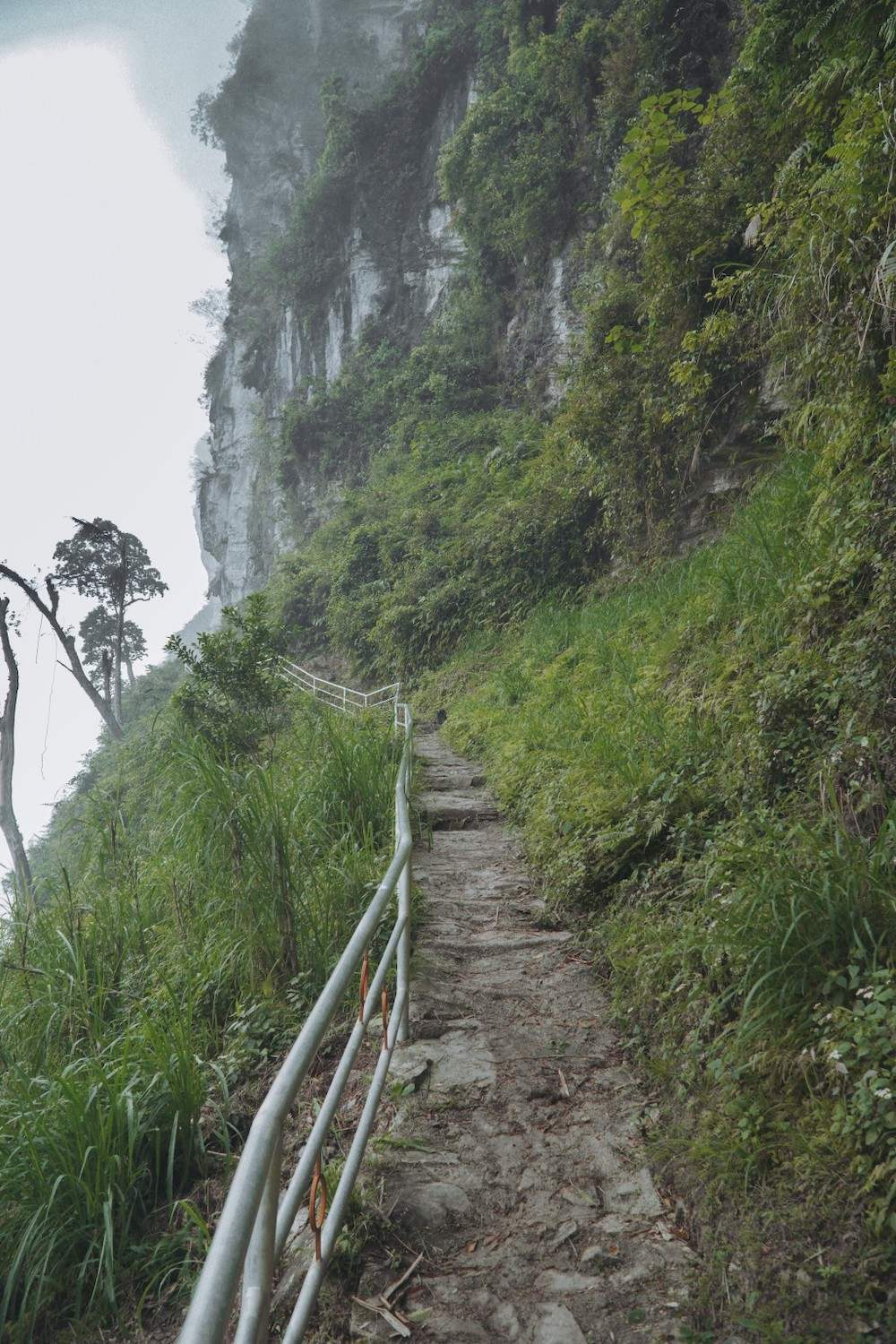
Ha Giang Trekking Tours: Ultimate Guide for Adventurers 2025
3. Experiences That Make Even Risk-Takers Want to Visit
The journey to the Death Rock is one of the most memorable challenges on the Ha Giang Loop expedition. Though not easy to conquer, this spot still attracts many travelers who don’t hesitate to stop and experience unique moments unavailable anywhere else.
3.1 Marvel at the Magnificent Beauty of Ma Pi Leng and Nho Que River
From Ha Giang’s Death Rock, the panorama before you unfolds like a living painting of Ha Giang’s mountains. The Ma Pi Leng range appears majestic, rising vertically into the sky, followed by layers of undulating karst formations. Below the pass, the deep-blue Nho Que River winds its way around rock faces, threading between deep gorges, creating a spectacular scene rarely matched elsewhere.
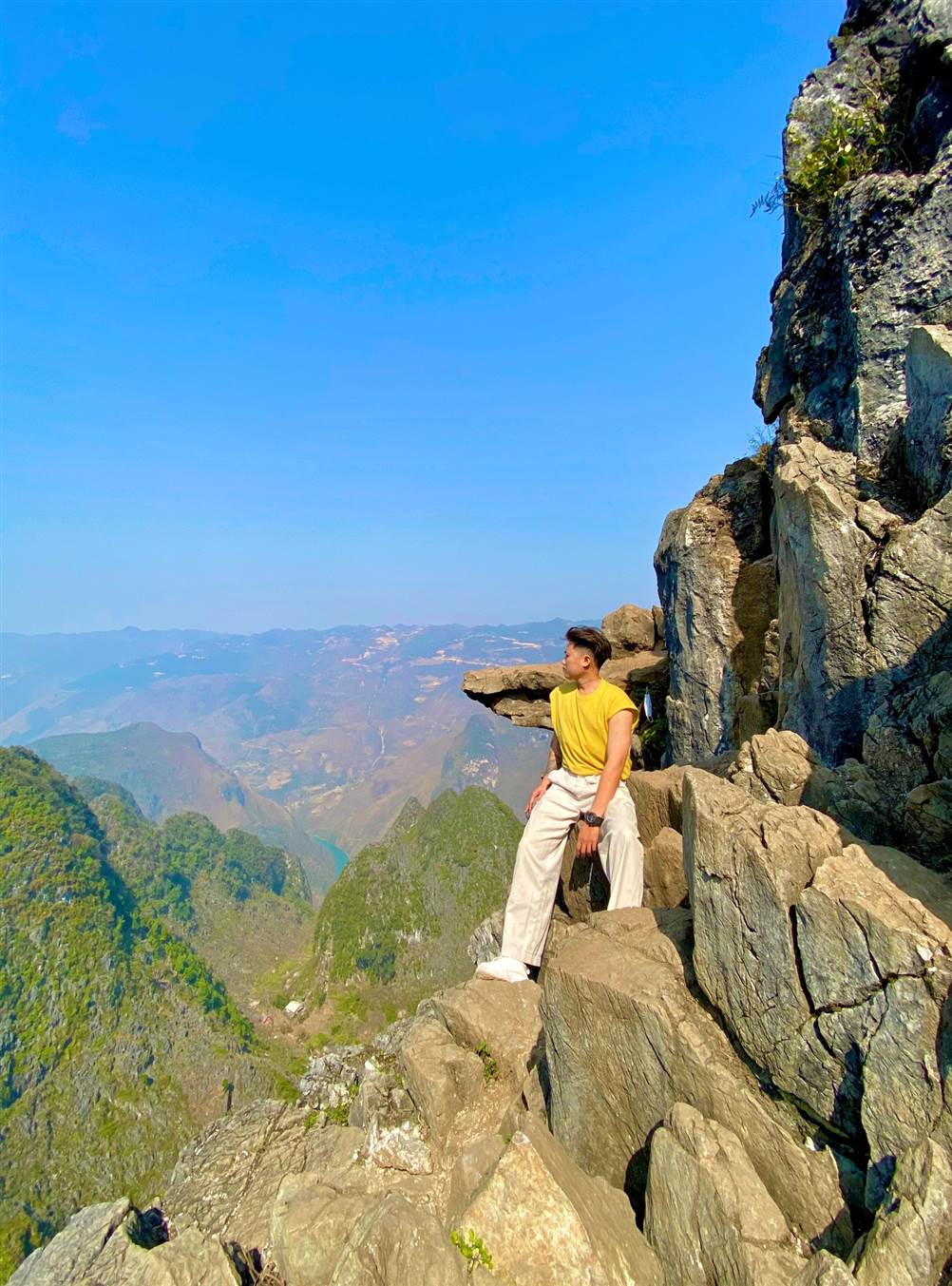
3.2 Check-in Among Drifting Clouds
In the early morning, before the sun pierces through the mountain peaks, the Death Rock is often shrouded in a thin layer of clouds drifting at eye level. Dew still clings to the rocks and grass, and the cool, moist air penetrates every step. The clouds floating leisurely along the mountainside create a tranquil scene characteristic of the highlands. Check-in Among Drifting Clouds at The Death Rock of Ha Giang feels surreal, almost like stepping into another world.

4. Important Tips for Trekking to Ha Giang’s Death Rock
To help ensure your trek to the Death Rock is as fulfilling as possible during your Ha Giang visit, Phieu Travel offers these essential tips:
- The Death Rock is not suitable for those with a fear of heights or history of heart conditions. If you easily become dizzy or shaky when looking down from heights, choose safer viewpoints instead.
- Only trek in good weather conditions. Avoid rainy days, heavy fog, or frost. The path becomes very slippery with limited visibility, which can be dangerous.
- Wear shoes with good grip, preferably trekking or athletic shoes with textured soles. Avoid fashion footwear, smooth-soled shoes, or sandals.
- Always keep both hands free to grip rocks when approaching the ledge. Don’t climb while holding phones or bulky bags.
- If visiting during busy periods, plan your photo poses in advance and be efficient with your check-in time. Don’t stand on the ledge for too long to avoid congestion and potential danger for those waiting behind you.
- Use burst mode on your camera to capture the perfect moments during your check-in without missing anything.
Despite its challenging terrain, The Death Rock of Ha Giang remains a bucket-list adventure spot, offering one of the most thrilling viewpoints over the Ma Pi Leng Pass and Nho Que River., and the quiet expanse of the rocky plateau. Let Phieu Travel accompany you on your Ha Giang adventure and help you explore this remarkable place completely and safely!
Read more:
- The Ultimate Guide to Driving the Ha Giang Loop by Car from Hanoi
- Hidden Paradises: The Enchanting Waterfalls on the Ha Giang Loop
- Explore Xa Phin Village Ha Giang Tea Culture and Local Life

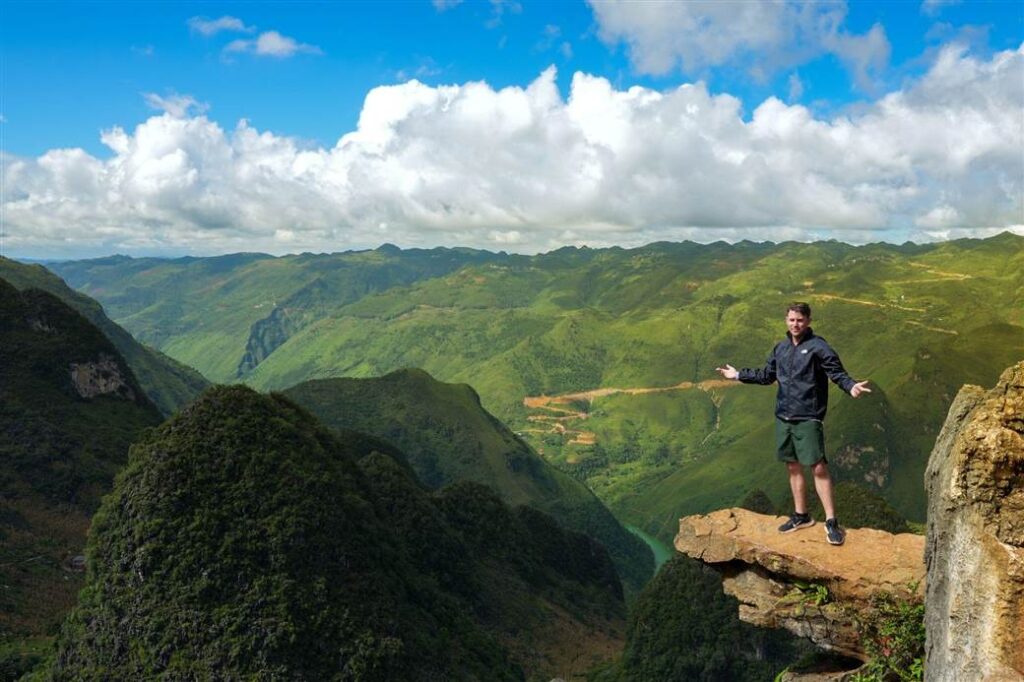
You Might Also Like
Ha Giang Weather in September: Complete Guide for Travelers
Exploring the magnificent Ha Giang Loop in September offers travelers a perfect balance of favorable[...]
Quan Ba Twin Mountains: Ha Giang’s Iconic Fairy Hills and Complete Travel Guide
The mystical Quan Ba Twin Mountains rise from the emerald valleys of Ha Giang like[...]
Vuong family mansion: the architectural marvel and cultural legacy of Ha Giang
Deep in Vietnam’s northern highlands, where mist-shrouded mountains meet terraced rice fields, stands a testament[...]
Ha Giang Loop Safety Tips: How to Ride Securely in Vietnam’s Northern Mountains
The Ha Giang Loop, with its winding mountain roads and breathtaking landscapes, offers one of[...]
The Ultimate Guide to the M-Shaped Curve on Ha Giang Loop
Vietnam’s remote northern province of Ha Giang hides a natural wonder that has captivated adventurous[...]
Most Beautiful Places to Visit in Vietnam: Essential Destinations and Insider Tips
Vietnam captivates travelers with its stunning landscapes, rich cultural heritage, and warm hospitality. From mist-shrouded[...]
Beyond the Beaten Path: Discovering Ha Giang Province in Northeast Vietnam
Ha Giang Province in Northeast Vietnam stands as one of the country’s last frontiers for[...]
Rainy season in Ha Giang: what to expect, when to go, and travel tips
Vietnam’s northern frontier reveals a different face during the rainy season, transforming Ha Giang’s limestone[...]